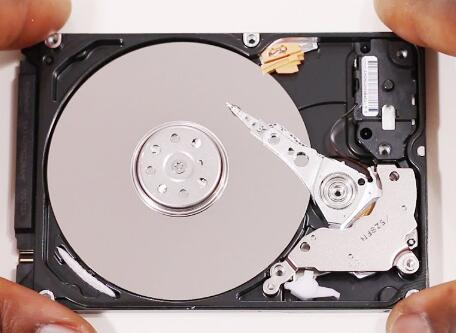If your hard drive isn’t being detected, it can be due to various reasons ranging from hardware issues to software misconfigurations. Here’s a comprehensive guide to help you troubleshoot and resolve the problem.
1. Check Physical Connections
Internal Drives:
Power and Data Cables: Ensure that the SATA or IDE cables are securely connected to both the motherboard and the hard drive. A loose connection can prevent the drive from being recognized.
Alternative Ports: Try connecting the hard drive to a different SATA port on the motherboard. Sometimes, specific ports may be disabled or malfunctioning.

External Drives:
USB Ports: Connect the external hard drive to different USB ports on your computer. Preferably, use ports directly on the motherboard rather than front-panel or hub connections.
Cables: Test the drive with a different USB cable to rule out cable issues.
Power Supply: For external drives that require external power, ensure the power adapter is functioning correctly.
2. Verify BIOS/UEFI Settings
Access BIOS/UEFI: Restart your computer and enter the BIOS/UEFI settings (commonly by pressing Del, F2. or F10 during startup).Reddit
Detect Drives: Check if the hard drive is listed among the connected devices. If not, it might indicate a hardware issue.
Enable Ports: Ensure that the SATA or USB ports are enabled in the BIOS settings.Reddit
Boot Order: Confirm that the hard drive is set in the correct boot order, especially if it’s the primary drive.
3. Use Disk Management in Windows
Access Disk Management: Right-click on the Start button and select “Disk Management.”
Initialize Disk: If the drive appears as “Unknown” or “Not Initialized,” right-click and choose “Initialize Disk.”
Assign Drive Letter: If the drive lacks a letter, right-click on the partition and select “Change Drive Letter and Paths.” Assign a new letter.易我
Format Drive: For unallocated space, right-click and choose “New Simple Volume” to format and assign a drive letter.Windows Central
4. Update or Reinstall Drivers
Device Manager: Open Device Manager (Win + X > Device Manager).
Disk Drives: Expand the “Disk Drives” section.微软社区
Update Driver: Right-click on the problematic drive and select “Update driver.”
Uninstall Device: If updating doesn’t work, choose “Uninstall device,” then restart your computer to reinstall the driver automatically.
5. Run Hardware Diagnostics
Manufacturer Tools: Use diagnostic tools provided by your hard drive’s manufacturer (e.g., Seagate SeaTools, Western Digital Data Lifeguard).
Third-Party Tools: Utilities like CrystalDiskInfo can provide S.M.A.R.T. data to assess drive health.
6. Check for Partition Issues
Partition Recovery: If partitions are missing, software like TestDisk can help recover lost partitions.
Data Recovery: For recovering files from inaccessible drives, consider using tools like EaseUS Data Recovery Wizard or Recuva.
7. Consider Operating System Issues
Windows Updates: Ensure your operating system is up to date, as updates can fix bugs related to hardware detection.
System Restore: If the drive was previously detected, performing a system restore to an earlier point might resolve the issue.
8. Evaluate for Physical Damage
Listen for Noises: Unusual sounds like clicking or grinding can indicate physical damage.
Professional Help: If you suspect hardware failure, consult a professional data recovery service. Avoid opening the drive yourself, as this can cause further damage.
9. Use Command-Line Tools
DiskPart: Open Command Prompt as administrator and use DiskPart to manage disks. Be cautious, as incorrect commands can lead to data loss.Windows Central
CHKDSK: Run chkdsk /f /r on the drive to check for and fix file system errors.
10. Prevent Future Issues
Regular Backups: Maintain regular backups of important data to prevent loss.
Safe Removal: Always use the “Safely Remove Hardware” option before disconnecting external drives.
Surge Protection: Use surge protectors to safeguard against power fluctuations.
About us and this blog
Panda Assistant is built on the latest data recovery algorithms, ensuring that no file is too damaged, too lost, or too corrupted to be recovered.
Request a free quote
We believe that data recovery shouldn’t be a daunting task. That’s why we’ve designed Panda Assistant to be as easy to use as it is powerful. With a few clicks, you can initiate a scan, preview recoverable files, and restore your data all within a matter of minutes.

 Try lt Free
Try lt Free Recovery success rate of up to
Recovery success rate of up to









